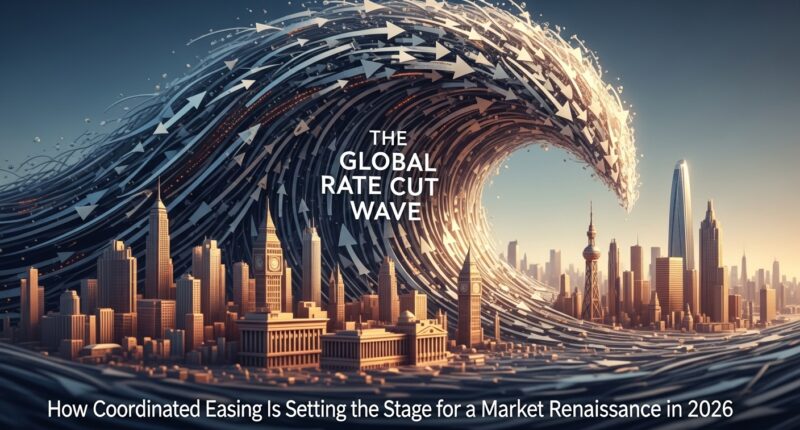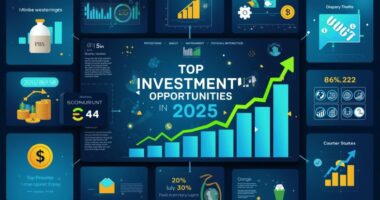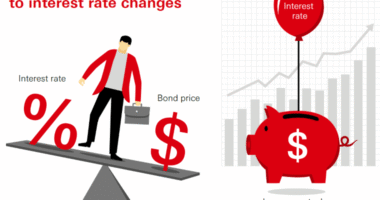A turning point in monetary history
After nearly four years of aggressive tightening, the global financial system has reached a monetary inflection point. Central banks across continents — from the Federal Reserve to the European Central Bank, the Bank of England, and the Reserve Bank of India — are now in synchronized easing mode.
The pivot from restraint to stimulus is reshaping global markets in real time. Equities are rallying, bond yields are falling, and liquidity is returning to risk assets. But unlike the emergency stimulus of 2020, this time the rate cuts are calibrated and preemptive — designed to secure a soft landing and re-anchor growth without reigniting inflation.
Economists are calling this the “Global Rate Cut Wave”, and its implications for 2026 could be profound.
Why the rate cut wave began
The end of inflation’s dominance
The root cause of the global pivot is clear: inflation has retreated. Headline CPI across G7 economies is now averaging 2.2%, down from more than 8% in 2022.
After months of stable prices, central bankers finally have the confidence to shift from defense to offense. With real rates still high, the risk has flipped — from doing too little to doing too much.
A synchronized slowdown
Growth momentum has cooled across both developed and emerging economies. The IMF expects global GDP to expand just 2.8% in 2025, the slowest non-crisis pace in a decade.
The challenge isn’t inflation anymore — it’s stagnation. Rate cuts aim to preempt a broader slowdown before it undermines labor markets or business investment.
Restoring financial stability
Tighter monetary policy left pockets of stress in commercial real estate, small-business credit, and sovereign debt. Lowering rates now helps ease refinancing risks and stabilize funding markets before vulnerabilities spill over.
The new monetary cycle: gentle, global, and data-driven
This isn’t a repeat of the zero-rate era. Central banks are acting with discipline, cutting rates in measured increments of 25–50 basis points.
| Central Bank | Policy Rate (Nov 2025) | Change YTD | 2026 Outlook |
|---|---|---|---|
| Federal Reserve (U.S.) | 4.25% | ↓100 bps | 3.5% target by mid-2026 |
| European Central Bank | 3.00% | ↓75 bps | Further cuts likely |
| Bank of England | 3.75% | ↓100 bps | Gradual easing expected |
| Bank of Japan | 0.10% | ↓15 bps | Maintaining yield control |
| Reserve Bank of India | 5.75% | ↓50 bps | Data-dependent easing |
| People’s Bank of China | 3.10% | ↓40 bps | Moderate liquidity expansion |
The guiding principle this time: stability through moderation. The goal is not stimulus for its own sake, but equilibrium — a healthy cost of capital that encourages investment without overheating the economy.
How markets are responding
1. Bond markets lead the rally
Global bond yields are falling as investors price in an extended easing cycle. The U.S. 10-year Treasury yield has dropped to 3.7%, its lowest level in 18 months, while European sovereign bonds have rallied across the curve.
Credit spreads are tightening too, reflecting lower default risk and improving liquidity conditions.
2. Equities are breaking out
Global equity indices are hitting fresh yearly highs. Growth-sensitive sectors — technology, industrials, and financials — are outperforming as investors anticipate cheaper financing and improved earnings outlooks.
3. Currency adjustments
The U.S. dollar has weakened modestly, benefiting emerging-market currencies. The euro, yen, and Indian rupee are gaining strength, fueling capital inflows into non-U.S. markets.
4. Commodities stabilize
Rate cuts have tempered dollar pressure, keeping commodities like oil and gold stable. Copper and lithium prices are rising on expectations of renewed investment in green infrastructure.
The mechanics: how rate cuts stimulate growth
Rate cuts don’t just reduce borrowing costs — they reset the entire financial ecosystem.
-
Cheaper corporate credit → firms refinance debt, boost capex, and improve margins.
-
Lower mortgage rates → housing markets revive, supporting construction and consumption.
-
Higher asset valuations → wealth effects stimulate spending and investment.
-
Currency realignment → export competitiveness improves, especially in emerging economies.
The combined effect: a self-reinforcing cycle of liquidity, confidence, and growth.
The Fed’s role: leading the global pivot
As always, the U.S. Federal Reserve sets the tone for global liquidity. Chair Jerome Powell’s pivot in September 2025 — signaling “sustained but measured” easing — unleashed a synchronized policy response worldwide.
The Fed’s challenge now is to manage expectations. With markets pricing three more cuts by mid-2026, policymakers are walking a fine line between optimism and complacency.
Still, with inflation under control and productivity gains from AI-driven efficiency, the Fed’s calculus appears sound: moderate growth at sustainable inflation.
The European balancing act
The European Central Bank (ECB) faces a different challenge: reigniting growth in a sluggish bloc while maintaining fiscal discipline.
By cutting rates to 3.00%, the ECB aims to support bank lending and business investment. Yet with Germany and France still facing industrial contraction, fiscal coordination will be crucial.
The positive news: the eurozone’s inflation has stabilized near target, and wage growth remains contained. The stage is set for a gradual but durable recovery through 2026.
Emerging markets: the early winners
Emerging economies are benefiting the most from the global rate-cut cycle. As dollar pressure fades, capital inflows are surging.
-
India is attracting record portfolio investment, driving its stock market to all-time highs.
-
Brazil and Mexico are cutting rates preemptively, leveraging stable inflation to boost local credit.
-
Indonesia and Vietnam are expanding infrastructure financing as yields normalize.
For the first time in years, EM policymakers are easing from a position of strength — not crisis. This positions them as growth engines in the global economy’s next phase.
The investor’s playbook for 2026
1. Favor rate-sensitive sectors
Real estate, industrials, and financials tend to outperform during early easing cycles. These sectors benefit from lower borrowing costs and rising asset prices.
2. Lock in bond yields early
Before yields fall further, investors can capture high real returns from investment-grade and long-duration bonds.
3. Watch currency trends
A weaker dollar historically precedes emerging-market rallies. Diversifying across currencies like the peso, rupee, and won can enhance returns.
4. Lean into growth equity themes
AI, green energy, and infrastructure remain long-term beneficiaries of lower global rates, as capital becomes cheaper for innovation.
5. Expect volatility
Easing cycles often start smoothly but end unevenly. Monitor inflation data closely — a premature policy reversal could unsettle markets.
The risks: what could derail the rate cut cycle
Inflation rebound
If commodity shocks or wage pressures resurface, central banks may have to pause cuts abruptly, disrupting markets.
Fiscal instability
Government debt levels are still high. Overly aggressive rate cuts could reignite deficit spending and weaken sovereign credit ratings.
Asset bubbles
Excess liquidity can fuel speculative behavior, especially in tech and property markets. Central banks will need to balance growth with macroprudential caution.
Geopolitical uncertainty
Regional conflicts or trade disruptions could offset monetary easing benefits by reintroducing supply-side inflation.
A structural shift in monetary philosophy
The coordinated easing cycle marks more than just a tactical adjustment — it represents an evolution in central banking philosophy.
The new mantra is “predictable flexibility.” Policymakers are abandoning dogmatic inflation-targeting for a broader mandate:
-
Sustain growth,
-
Preserve employment,
-
And manage systemic stability simultaneously.
This pragmatic approach could define the monetary landscape for the rest of the decade, bridging the gap between the high-volatility 2020s and a more stable 2030s.
What this means for the real economy
Businesses and households stand to gain significantly from the easing cycle.
-
SMEs will see improved access to credit.
-
Homebuyers will benefit from lower mortgage rates.
-
Exporters gain from weaker currencies.
-
Governments will refinance debt at lower costs, freeing fiscal space for public investment.
If executed responsibly, this synchronized easing could spark a global soft landing — a scenario where inflation stabilizes, growth revives, and financial markets thrive.
The bottom line: the dawn of a new liquidity era
The Global Rate Cut Wave of 2025–2026 is not a desperate policy move — it’s a strategic recalibration.
For investors, it signals a renewed era of moderate inflation, stable yields, and expanding liquidity — the perfect foundation for balanced growth.
For policymakers, it’s a chance to restore credibility through coordination and transparency.
And for businesses, it’s an open invitation to innovate, expand, and invest.
The great liquidity shift has begun — not as a bubble, but as the quiet revival of confidence that the global economy has been waiting for.









